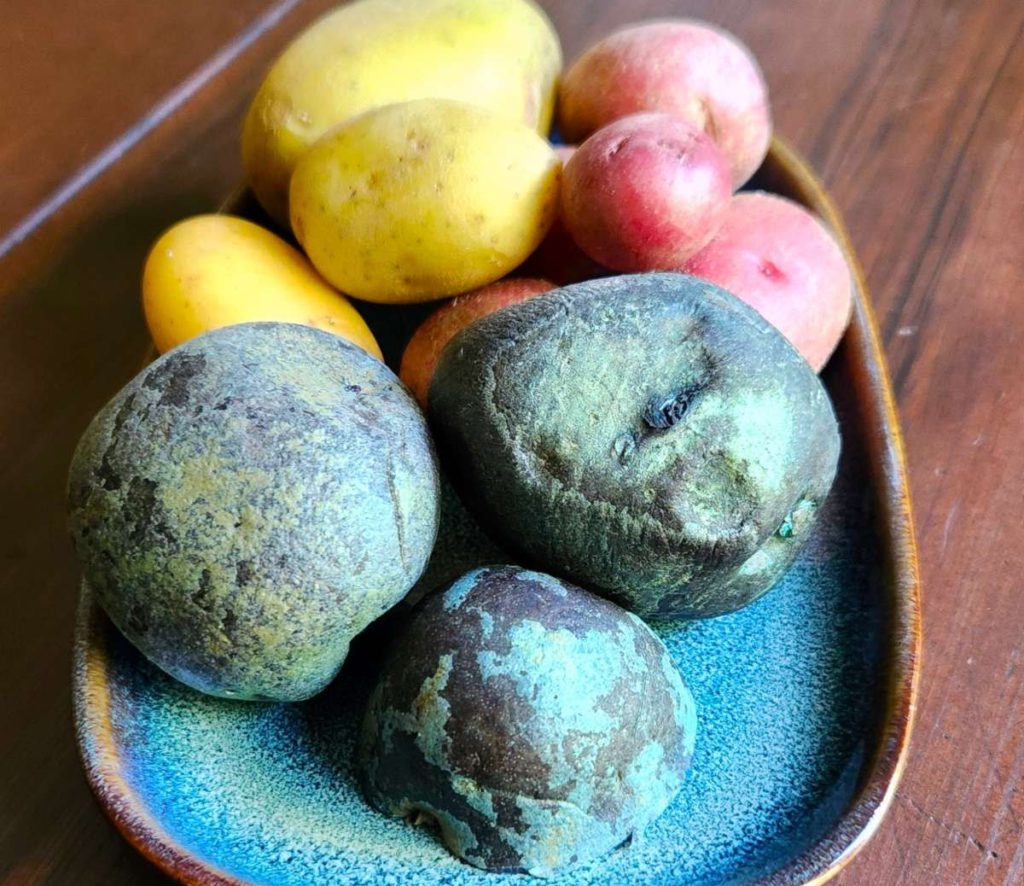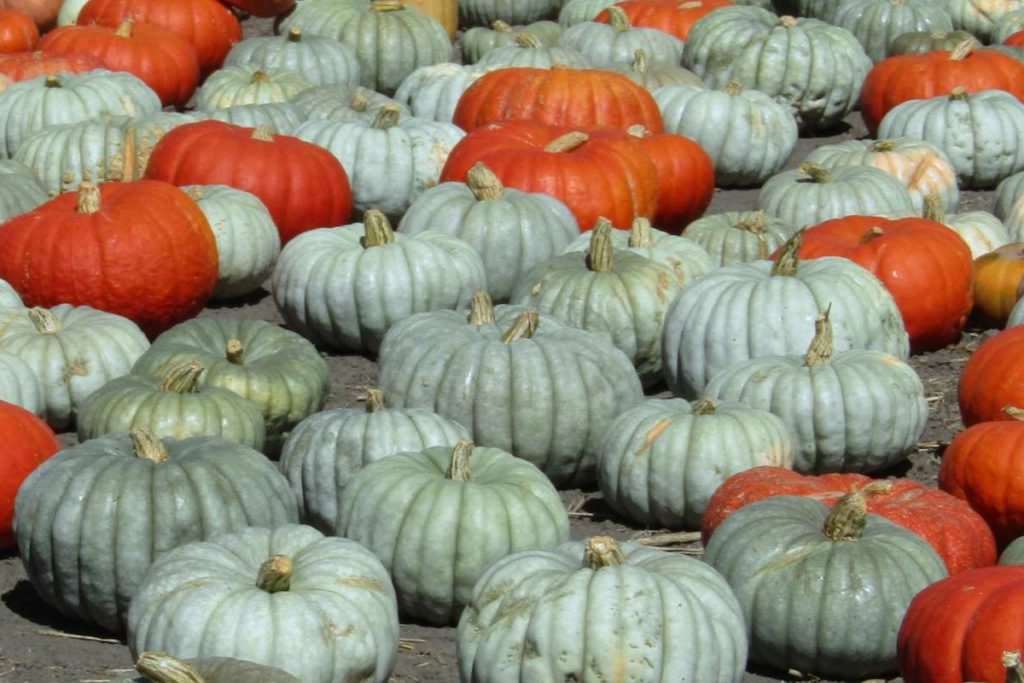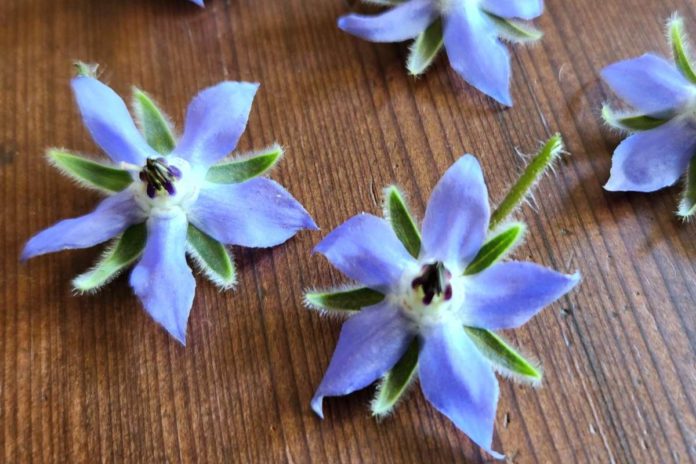The color blue is rare in nature except for waterways and the sky. There are a small number of decorative blue gems such as sapphires and aquamarine, and bluestone, a sandstone used for landscaping pavers. There are a modest number of plants such as hydrangeas and delphiniums that have blue flowers. A handful of plants which can be found in some tropical rainforests that have blue foliage. Quite tiny is the number of blue edible plants.
Anthocyanins are the pigments responsible for producing colors in plants. The colors blue and purple in plants are produced by a particular anthocyanin called delphinidin. Delphinidin can produce blue tones when in an alkaline environment or when interacting with certain co-pigment anthocyanins called flavones.
Pigments appear as the color of the light they reflect. Blue plants absorb red light wavelengths and reflect blue light wavelengths. Blue light has the most energy of all the light waves on the visible spectrum. This means that blue plants reflect rather than absorb the light which is best for growth, and is one of the reasons they are so rare.

Blue is a unique color in natural food so many gardeners are choosing to grow blue vegetables and many cooks are going out of their way to source these vegetables.
“Adirondack Blue” is a bluish-purple-skinned potato variety with blue flesh. It was released by Cornell University in 2003. The skin is often netted, a physical condition where the skin develops a rough net-like patterning. The unique blue hue more than makes up for the potato’s rustic appearance.
The “Blue Prince” pumpkin was released in 2020 by Seeds by Design. The light blue pumpkins range from seven to nine pounds and have a soft, velvety-textured deep orange flesh perfect for baking. The vine flowers and fruits early and has better disease resistance than many other pumpkins.
Blue milk mushroom, Lactarius indigo, is a mushroom with dark blue flesh which turns pale blue as it matures. It can be found growing in forests in North and Central America and East Asia. The mushroom discharges a blue milk-like liquid when cut. It can have a mildly earthy peppery flavor, or a slight umami-like flavor depending on its environment.
Blue Oyster mushrooms are another example of edible fungi with a brilliant blue hue when young which slowly turns paler as the mushrooms age. Raw mushrooms offer a slightly chewy texture with a hint of anise. They have a much more tender texture and slight licorice flavor when cooked.

Borage, also known as starflower, is a common Mediterranean herb grown in many gardens to attract pollinators. It is a companion plant to strawberries, spinach, brassicas, legumes and tomatoes. It produces multiple sky-blue star-shaped flowers that bloom throughout the summer. The vibrant blue flowers have a sweet cucumber-like taste and will make a dish stunningly attractive.
Hopi maize or Hopi blue corn is traditionally grown by the Hopi people in the Southwestern United States. It produces six- to eight-inch ears full of dark blue kernels. Hopi blue corn is primarily used to make a slightly sweet blue cornmeal but can be eaten as corn on the cob. The blue cornmeal is used in a variety of recipes including tortillas, cornbread, muffins and pancakes.
There are other blue vegetables and fruits as well. There’s blue cabbage, blue kale, blue squash, blue carrot, blue tomato and of course blueberries. Some of these blue plants are easier to find in grocery stores and foreign markets than others. Many may have to be grown at home from seeds which are available online from companies such as rareseeds.com and johnnyseeds.com.
Blue vegetables are just as or even more nutritious than other varieties with more common colors. Their uniquely vibrant color adds visual appeal to a dish. Unfortunately, the cooking process can turn the blue color purple or reddish. Delphinidin, the pigment responsible for a blue hue, is sensitive to pH. It produces a blue color in an alkaline environment, so maintaining a non-acidic setting while cooking will retain the blue color. This can be achieved by adding a pinch of baking soda to the water when boiling as a cooking method.
Delphinidin and other anthocyanins are sensitive to high temperatures. Overcooking and prolonged exposure to heat can degrade the blue color. Steaming and cooking in a microwave are good methods to preserve blue color because the food cooks quickly and there is minimal nutrient loss. Exposure to oxygen and light can degrade blue pigments, so storing foods in airtight containers and in a dark location can help retain the blue color prior to cooking.
Many diners in the 1950s and 60s offered a blue-plate special, which was a meal at a reduced price. Today, chefs and home cooks are adding naturally blue food to plates to make them special.
Daniel O’Donnell is the co-owner and operator of an organic landscape design/build company in Fremont. Chrysalis-Gardens.com




